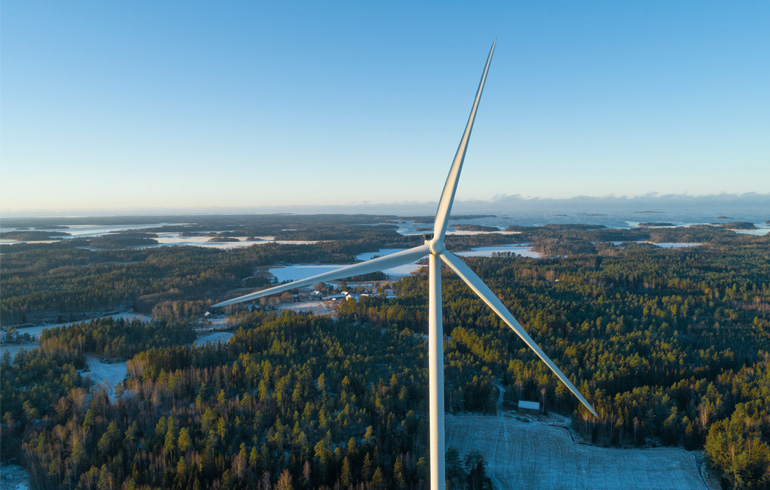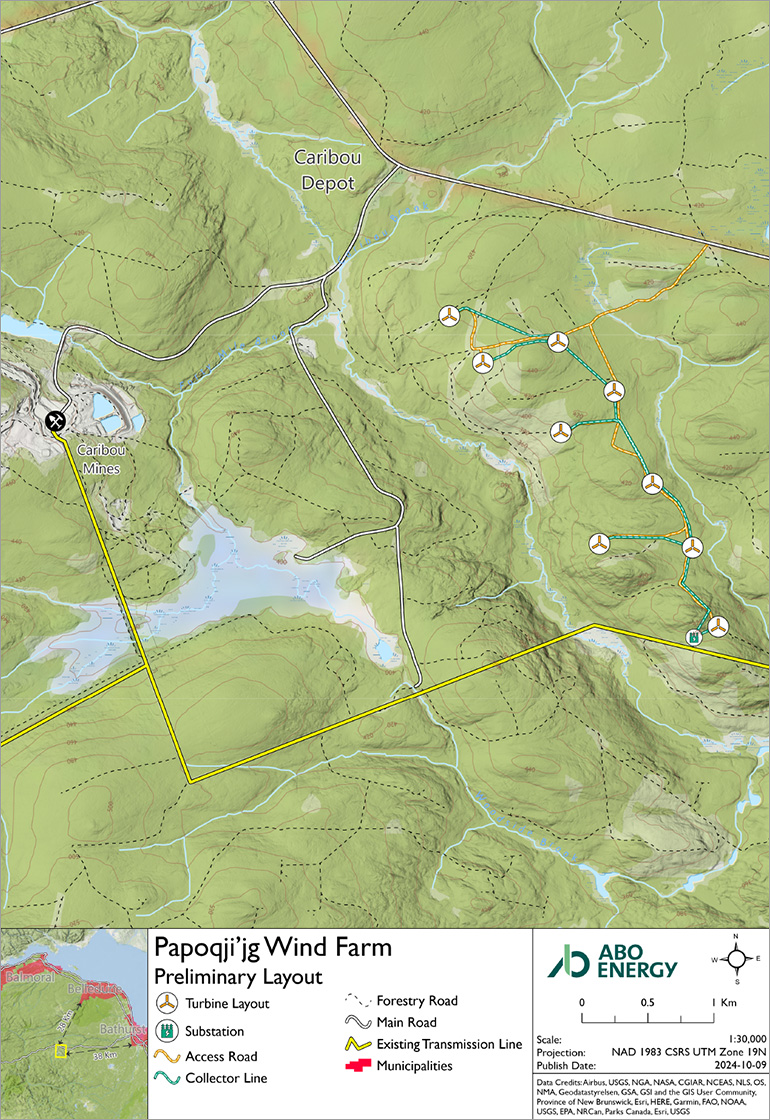What is the operational footprint of a turbine?
Depending on the turbine selected for the project, the concrete foundation for the turbine will range from 22 metres to 25 metres in diameter. Most of the foundation will be below ground and backfilled with soil.
What will we see?
The visibility of each turbine depends on the viewpoint. We will be providing preliminary visual simulations prepared by a third party. During development, we will ask community representatives to offer more viewpoints for more detailed visualizations. This Project is located a remote/very rural, so visual impacts are anticipated to be minimal or non-existent from any communities.
Will you be providing visual and noise assessments?
The proposed layout and turbine technology may change based on stakeholder, environmental and technical input. When available, we will share the visual and sound assessments to reflect the most up-to-date plan. This information is also included as part of the Environmental Impact Assessment registration.
How big will the turbines be?
A few factors contribute to the choice of wind turbines, such as the wind profile and the height of nearby vertical obstacles. The Project is still at a preliminary stage. Once we have more wind data to tell us where the wind blows the strongest, we can choose a turbine. We anticipate that the hub height will range from about 100 metres to 125 metres with an approximate blade length between 60 metres and 85 metres.
Will safety lights have to be on all night?
Aviation warning lights on wind turbines are required by Transport Canada regulations. However, the Project is exploring the feasibility of light mitigation options to reduce the visibility to those on the ground.
Will the turbines be noisy?
During development, we will prepare a noise impact assessment with a map showing predicted sound emissions in relation to any nearby receptors. As the Project team gains more information about the wind, the engineers adjust their recommendations about turbine models. Once we have selected a model, more information will be made available related to sound.
Does low frequency noise (LFN) or infrasound from turbines impact human health?
There are over 75,000 operational wind turbines in Canada and United States and there are now over 100 peer-reviewed published scientific articles on the potential for health impacts living in proximity to wind turbines. Although audible sound, infrasound and low frequency noise (LFN) are emitted from wind turbines it is not at a level that causes health impacts, headaches, nausea, sleep problems and tinnitus. LFN or infrasound are a common occurrence produced from wind itself and other human sources including road traffic, refrigerators, air conditioners, farm machinery, and airplanes.
Infrasound can be defined as sound waves with frequencies below the lower limit of human hearing. We will design the Project to meet New Brunswick’s regulations regarding audible sound criteria.
Humans are exposed to infrasound on a regular basis from several natural and engineered sources, at levels that generally exceed those produced by wind turbines. Additional information can be found at the Health Canada Wind Turbine Noise Study website: pamphlet-brochure-eng.pdf (canada.ca)
What is infrasound and is it harmful to me?
Infrasound can be defined as sound waves with frequencies below the lower limit of human hearing. We will design the Project to meet New Brunswick’s regulations regarding audible sound criteria. Humans are exposed to infrasound on a regular basis from several natural and engineered sources, at levels that generally exceed those produced by wind turbines.
Have health issues been taken into consideration?
We respect that some individuals may have concerns regarding health. The Project will be designed to meet or exceed all provincial regulations and guidelines currently in place to protect human health.
Health Canada with Statistics Canada and other external experts conducted a Community Noise and Health Study on wind turbines. The results, which were released in 2014, indicated that wind turbine noise was not linked to self-reported medical illnesses and health conditions.
How much power will the Project generate?
This renewable energy project is anticipated to be approximately 56-megawatts of power, with 7-9 turbines in total. However, depending on several factors the Project could vary between 49-megawatts to 63-megawatts (subject to change). The amount of clean energy produced at the Papoqji’jg Wind farm could displace approximately 2.8M tonnes of CO2 during its lifetime and power more than 15,000 homes annually!






















